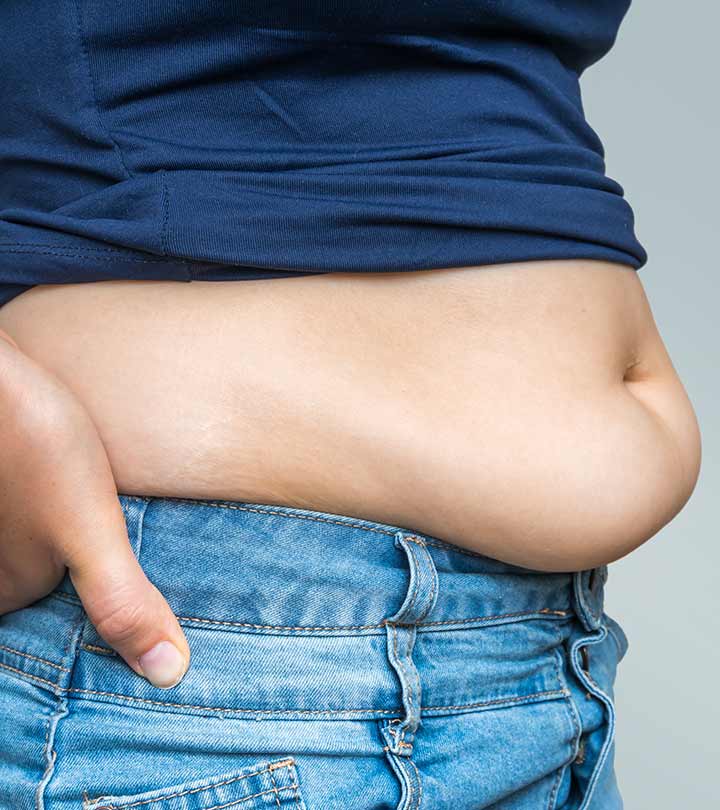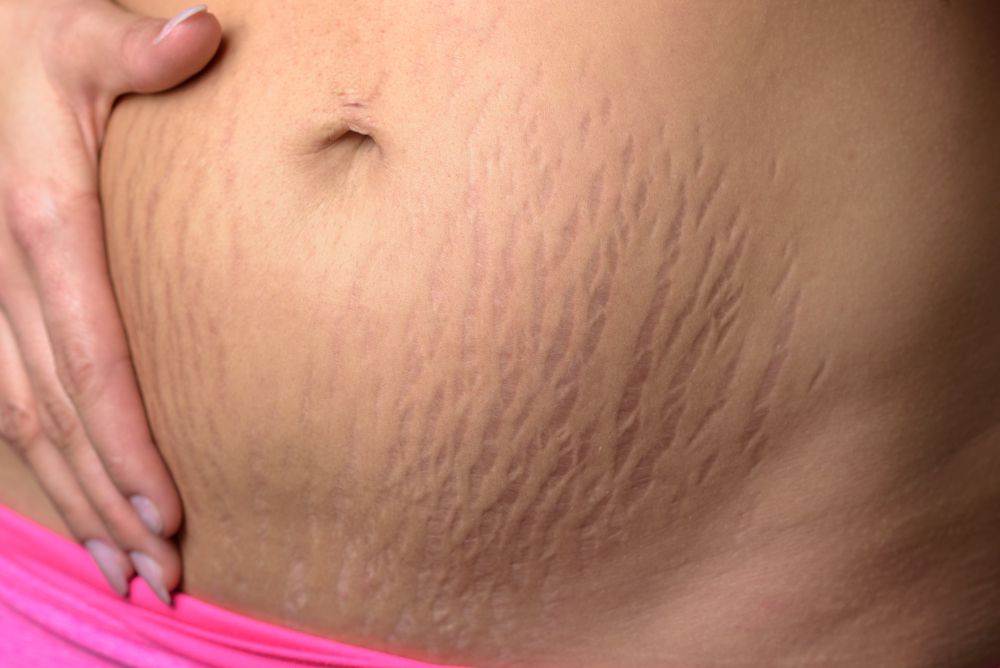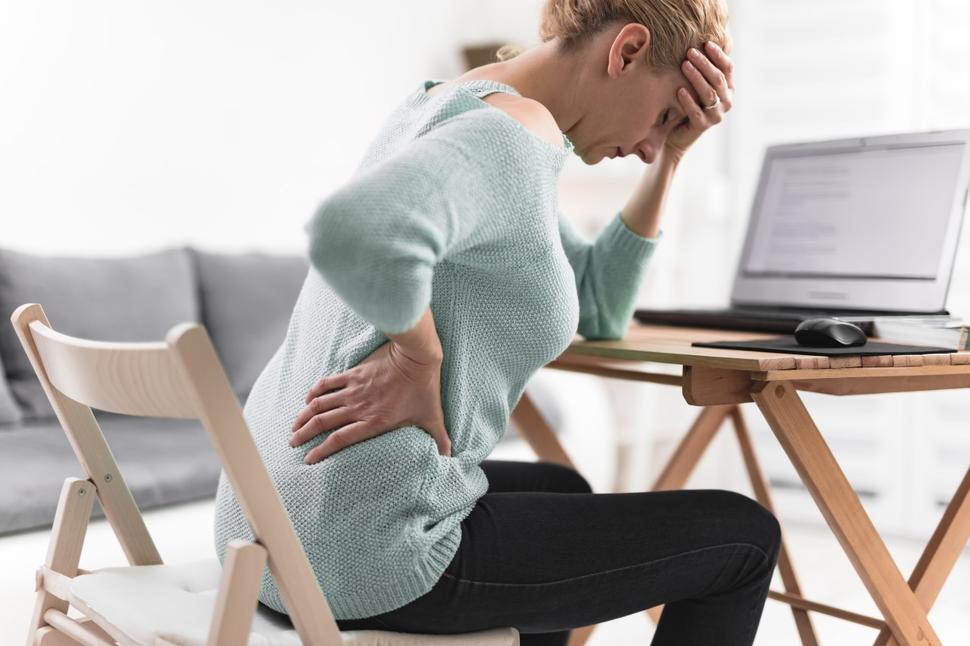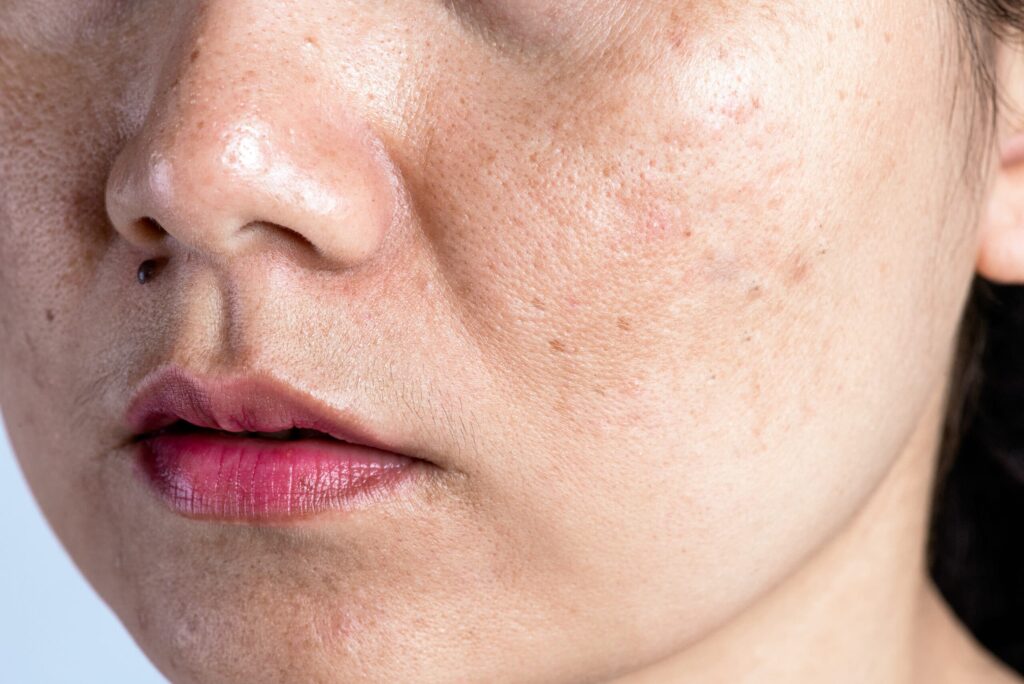During pregnancy, your body goes through a significant transition, and another significant one occurs after labor and delivery. While there is a ton of weekly information about your expanding tummy, your health and physique after giving birth are frequently forgotten as you deal with the undoubtedly significant challenges of caring for a newborn and getting by on little sleep.
Therefore, even while there is a ton to learn about getting pregnant, giving birth, and caring for your adorable baby, it’s also essential to conduct some research on the first several weeks after birth. Studies have shown that mothers are more prone to experience overwhelming, stressful, or worrisome feelings when they feel unprepared or are having a hard time adjusting to all the changes to their physical health after having a kid which is the very opposite of how you want to feel as a new mom.
Giving birth is incredibly great, but allowing yourself the time and resources to rebuild your muscles, hormones, vitamin levels, and everything else will change how you feel in the early stages of parenthood. Continue reading for suggestions from physicians, midwives, and physical therapists regarding what to anticipate from your postpartum body.
1. Bigger Breast Size
For a day or two after giving birth, your breasts will likely get flushed, puffy, painful, and engorged with milk. Your breasts will likely start to sag as a result of the stretched skin when this swelling subsides in approximately three to four days (or until you cease breastfeeding). Even if you don’t breastfeed, you could experience milk leakage for several weeks.
Robert Brueck, M.D., a board-certified plastic surgeon in Ft. Myers, Florida, says that when pregnancy and nursing stop, most women endure loss of breast volume, the retention of stretch marks, and some sagging.
Breast enlargement or engorgement following childbirth is common, although it can be uncomfortable. If you are not breastfeeding or pumping, wearing a supportive bra and applying cold compresses to relieve pain and swelling can make you feel less uncomfortable. You can try a warm shower or compress, a little massage, or even pumping to help the milk move if you are nursing or pumping.
2. The Brain and Hormones
It makes sense that you don’t feel like the old you considering how significantly both your life and, at least temporarily, your hormones have altered. “Some of your hormones go from the highest they ever will be to the lowest, just before delivery to just after,” explains Ann Dunnewold, a Dallas psychologist and co-author of Life Will Never Be the Same: The Real Mom’s Postpartum Survival Guide. The “baby blues” (mood swings, anxiety, sadness, or irritability that go away within a week or so of birth) or postpartum depression (similar symptoms that are more severe, last longer, and interfere with your daily life) can be caused by the sharp drop in estrogen and progesterone levels that occurs immediately after giving birth.
Oxytocin, also known as the “bonding hormone,” immediately rushes your body after delivery. The ability to recognize danger in your child’s environment is one part of good mothering, according to Dunnewold. “So anxiety can increase when oxytocin does,” She adds that these hormones interact with one another in a complex dance that affects your energy and mood. Progesterone, a naturally occurring anti-anxiety chemical, is low immediately after birth and your body might use more of it. So you can understand how those factors working together could cause postpartum anxiety. According to Dunnewold, it can be beneficial for mild mood to acknowledge and accept that your hormones are competing with you in this situation rather than punishing yourself.
As your hormones ultimately level out, it’s entirely normal to feel erratic with your mood for a few months. And if you’re having trouble, talk to your midwife, doctor, or counselor about how to cope.
Giving birth can also have an impact on thyroid hormones, which assist control body temperature, metabolism, and organ function. According to the American Thyroid Association, postpartum thyroiditis, an inflammation of the thyroid gland, affects five to ten percent of women. The origin of this condition is unknown. One to four months after delivery, symptoms may include sleeplessness, anxiety, rapid heartbeat, exhaustion, weight loss, and irritability. Four to eight months after birth, symptoms may include weariness, weight gain, constipation, dry skin, and depression. Through blood testing, your doctor can keep track of your thyroid levels and, if necessary, give medication.
3. Stomach Pooch
During pregnancy, your tummy changes more than any other part of your body. Stretch marks and extra skin and fat (sometimes known as a “pooch”) postpartum can result from these changes, depending on your age, genetics, and the amount of weight you gain. That bulge is most likely the result of laxity and distension of the abdominal wall caused by pregnancy, especially in the strongest layer securing your internal organs, the fascial layer beneath the muscles.
Your belly’s appearance may not return to normal for up to six weeks. However, because the abdomen skin has been tugged and stretched, it might never be as taut as it once was. Pregnancy causes abdominal muscles to stretch and separate, which might lead to a disease known as diastasis recti.
“Keeping the core muscles [abdominals and back] strong during pregnancy helps the abdominals recover faster,” explains Megan Flatt, a trainer and fitness educator in San Francisco and the brainchild behind Bump Fitness, a prenatal and postpartum exercise program.

4. Vitamin and Mineral Levels
In the first few weeks following birth, experiencing trembling and exhaustion is very typical (hello, frequent nighttime awakenings), but these symptoms can also be related to low iron levels. Due to blood loss during delivery, new mothers are more likely to experience iron deficiency after giving birth, according to Sarah O’Hara, a registered dietitian in Calgary who focuses on pre- and postnatal care. She counsels: As long as you are breastfeeding, or if you are not, as long as you experience postpartum bleeding, continue taking a prenatal multivitamin with iron.
Additionally, consume foods high in iron including leafy greens, beans, lentils, red meat, fortified whole grains, and legumes. After increasing your iron consumption, you should feel better in a few weeks.
After increasing your iron intake, you should feel better within a few weeks, but more severe deficiencies (characterized by shortness of breath, pale skin, dizziness, a swollen tongue, chilly hands and feet, or cravings for non-food things like ice cubes) may take longer to correct. To check your iron levels, you can ask your doctor to request a blood test.
According to O’Hara, you need choline, chromium, copper, iodine, selenium, and zinc if you’re breastfeeding. You also need vitamins A, E, C, and B complex. The best and most straightforward strategy is to consume a range of healthful meals and try to balance some protein with complex carbs like fruit, vegetables, pulses like beans and lentils, and whole grains.
According to some studies, vitamin D insufficiency may lead to a higher risk of postpartum mood disorders, but it isn’t conclusive, so ask your doctor about taking supplements.
Related: Foods to Avoid from During Pregnancy
5. Stretch Marks
Usually starting out red, purple, or dark brown, these thin scars on the stomach, hips, breasts, or butt eventually lighten after a year. According to David J. Goldberg, M.D., director of laser research in the department of dermatology at Mount Sinai School of Medicine in New York City, “whether you get stretch marks depends a lot on genetics and how quickly you gain weight.”
Stretch marks can be reduced using prescription topical ointments like tretinoin cream, but these products should not be used while you are pregnant or breastfeeding. They also work best when applied soon after giving birth.
Stretch marks cannot be avoided, however their intensity can be lessened in one study by using moisturizers while pregnant. Additionally, they discovered that solutions that promise to remove stretch marks and scars by using particular chemicals do not work.

6. Body Pain
“With all the pushing and contortions of labor, it’s natural to feel washed out, tired, and achy,” says Julian Robinson, MD, an assistant professor of obstetrics and gynecology at New York-Presbyterian Hospital in New York City.
Many postpartum women have abdominal aches and flutters (similar to menstruation cramps) as their uterus shrinks back to its pre-pregnancy size; these symptoms become more intense during breastfeeding. A prescription or over-the-counter medicines can be used to manage the discomfort, which should last only a few days.

7. Bloody Vaginal Discharge
Women must remove the leftover tissue and blood from the uterus after giving birth, regardless of the delivery method. Known as lochia, this type of vaginal discharge can be quite bloody. Furthermore, several women have reported that their lochia flow was even heavier than usual. One of the numerous changes your body will likely through after giving birth is this, but the good news is that it should gradually lessen until the discharge ceases entirely. Do not use tampons because they may cause an infection. In this situation, heavy-duty pads are ideal. If you have any queries or worries regarding this or anything else, you can ask your gynecologists.
8. Swollen Feet and Extremities
According to Lyssie Lakatos, R.D., C.D.N, C.F.T., a personal trainer and nutritionist in New York, “during pregnancy, your body produces approximately 50% more blood and other fluids than usual to accommodate your growing baby.” Edema, or swelling of the hands, face, ankles, neck, and other extremities, can also be caused by hormonal changes. In actuality, a half-size growth in your feet is typical.
The removal of all the extra fluids from your body may take many weeks. Choose foods high in potassium, such as fruits and vegetables, to hasten the process because they help offset sodium’s water-retentive effects. Additionally, she advises exceeding the suggested daily intake of eight glasses of water, particularly if you are nursing.
Additional options you could try include:
- Avoiding prolonged sitting or standing (greater than 30–60 minutes)
- Choosing low sodium options and avoiding items high in salt
- Elevate your feet and legs all day long.
- Compression socks can be worn to minimize edema.
9. Night Sweats
A woman’s postpartum body still has a significant amount of extra fluid. Additionally, after delivery, a whole process of natural hormonal adjustment takes place. The new mother may experience night sweats as a result of all of this during the first week after giving birth. In general, maintaining a cool bedroom, donning lightweight clothing made of natural materials, and even employing infant mattress pads can be very beneficial during this period.
Related: Strange Pregnancy Dreams: The Reason Behind It
10. Varicose Veins
Up to 40% of pregnant women experience dilated blood vessels close to the skin’s surface, most frequently on the thighs and calves. The pressure of pregnancy pounds on the veins, hormones, and heredity all play a part, according to Lisa Masterson, M.D., an OB-GYN at Cedars-Sinai Medical Center in Los Angeles.
Varicose veins can take up to 12 weeks to clear up after giving birth, even though the problem is typically very temporary. Your body will produce more blood during pregnancy, which puts strain on your veins and makes it easier for hemorrhoids and varicose veins to form.
In order to feel better, Ceders-Sinai advises using sitz baths, cold packs, and stool softeners. Even your doctor might be able to prescribe medications to help ease the discomfort.
11. Urinary Incontinence
Unfortunately, the urine incontinence problem that is frequently brought on in the later stages of pregnancy due to the pelvic floor muscle strain continues to affect the post-pregnancy body. Even after giving birth, women are still susceptible to leaks while carrying heavy objects, sneezing, or coughing. Kegel exercises can be quite beneficial in this situation and help to strengthen the pelvic muscles.
Basically, stopping the urine flow in the middle around ten times each time you go is the greatest practice. Try to extend the squeeze a little more each day. After roughly a month of this regular exercise, the change ought to be apparent.
12. Acne
Acne in the new mother might also be brought on by hormonal changes. After roughly six weeks postpartum, this specific problem should resolve itself. With the application of salicylic acid lotions, the improvement can be noticeable much sooner. However, using these creams while nursing is dangerous, so take that into account.
13. Variations in Energy Levels
No two women have exactly the same experiences before, during, or after giving birth. In that regard, some women have stated that the first six weeks after giving birth were very energetic for them. On the other hand, several women have reported that at this time their energy levels decreased and they felt drained and cranky.
14. Hair Loss
Almost 10% of new mothers experience hair loss as a result of their hormones shifting. This doesn’t imply that your hair will totally fall out or that anyone other than you will notice the change. The body just sheds the additional hair for three months after delivery since it thickens during pregnancy. Don’t hesitate to tell your doctor if you see that the hair loss is lasting longer than expected and is starting to make you feel quite uneasy, as it may indicate a thyroid problem.

15. Thicker Legs and Thighs
During pregnancy, it is normal for women to disregard their diets and exercise routines. After giving birth, it’s critical to resume both a regular exercise schedule that targets several muscles and a balanced and nutritious diet. Naturally, some ladies find that they just can’t move very much during this time. This, however, also implies that gaining weight is simple, particularly when it comes to fat deposition in regions like the thighs, hips, and back. However, it could take up to a year to lose weight, so be prepared with persistence and patience.
16. Weak and Painful Arms
Many women overlook upper body exercises during pregnancy because the belly receives so much attention. However, joint pain in the arms and shoulders is not unusual, particularly because of the excessive synthesis of relaxin hormone during pregnancy. As a result, it’s common for women to experience soreness and weakness in their arms after giving birth.
It would be ideal to continue a regular exercise regimen that emphasizes the upper body while still pregnant in order to reduce the strain and probable pain. Women should wait at least six weeks after giving birth before starting their exercises again.
17. Constipation
After delivery, it takes some time for the bowel movements to return to normal. Not only can delivery influence the intestines, but the possibility of using painkillers and having weak abdominal muscles can make the entire procedure more difficult. Additionally, some women attempt to delay going to the bathroom longer out of concern that their stitches will come undone, which makes the constipation problem worse.
A diet high in fiber and enough of water (even more than eight glasses each day) can help things move along more quickly. It also helps to move around a little bit without making any severe motions. Stitches shouldn’t be a concern because they virtually ever come undone due to bowel movements.
18. Skin Discoloration
The “mask of pregnancy” known as melasma affects up to 70% of pregnant parents. These black blotches on the forehead, cheeks, and upper lips may be the result of hormonal swings; they frequently lighten after childbirth but do not entirely disappear.
Steroids, tretinoin (the active ingredient in Retin-A), and prescription bleaching creams all have different modes of action. Within a few weeks of treatment, many patients experience benefits. The drawbacks are that you can’t use these creams while you’re nursing or pregnant, they’re not always covered by insurance, and they might temporarily cause redness, peeling, and dryness.

19. Feeling Uneasy
Anxiety and even nightmares can be brought on by the physical, mental, and hormonal changes that a woman experiences after giving birth. Now, as long as your feelings don’t interfere with your regular life and kid care, feeling a little concerned during this period is entirely acceptable. As a result, anxiety symptoms ought to disappear two weeks after birth. It’s critical to inform your doctor if they continue for a longer period of time and begin to cause more serious problems, such as panic attacks and hopelessness. In particular, postpartum depression, a dangerous disorder that needs to be appropriately treated, could be indicated by this.
20. C-Section Scar
A lower abdomen scar is unavoidable after a C-section delivery. The aforementioned scar is already modest and thin in today’s society and will eventually disappear. It is also true that it will never completely vanish. You might want to think about cosmetic scar removal procedures in the future if this bothers you.
The following conditions can indicate major health complications during the first six weeks after giving birth, so consult your doctor right away.
- Painful and red episiotomy or C-section area, or getting discharge from the incision
- Headache and trouble seeing that don’t seem to go away
- Breasts that are painful, swollen, and red, along with fever
- Extremely severe bleeding requiring hourly pad changes and producing several blood clots
- Unusual and odorous vaginal discharge
- Needing to urinate a lot or experiencing burning while urinating
- Enduring constipation for three days or longer
- Having chills or a temperature of at least 100.5 degrees
- Vomiting, nauseous, or dizziness
- DVT may be indicated by a red, puffy, and sensitive region on the calf or leg.
- Excessive swelling in the face, hands, feet, and/or fingers
- Overwhelming grief and pessimism about not being able to properly take care of yourself or your child.
Takeaway
The postpartum body changes can be challenging to deal with, not to mention all the emotional shifts you’ll also have to go through. That being said, asking for assistance is both totally normal and highly advised. Not everything has to be done by you. Count as much as you can on both your spouse and your friends and relatives. It goes without saying that you should attend all of your planned doctor’s appointments and be completely honest with your healthcare provider about any symptoms you may be having.
Related: Fertility Diet | 8 Diet Tips when trying to Conceive
